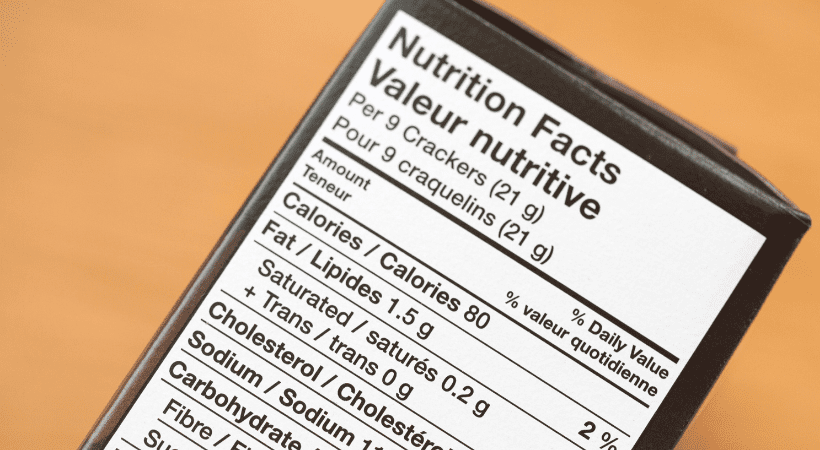Which Areas of the UK Are Leading the Way in Reducing Food Waste in 2023?
Which Areas of the UK Are Leading the Way in Reducing Food Waste in 2023?
With food prices continuing to rise and pressure on wallets becoming ever tighter, food waste is now a bigger issue than it ever has been before. Many of us are guilty of throwing something away because we’re not quite sure if it’s safe to eat.
Each year, Brits throw away 9.5 million tonnes of food. According to the Waste and Resources Action Programme (WRAP), 6.4 million tonnes of that waste could have been eaten.
So which UK cities are leading the charge in making strides to cut food waste down?
Research undertaken by leading food label consultants Ashbury, has compared internet searches surrounding food waste and available listings on popular food waste collection app, Too Good To Go.
Internet search data included terms such as:
- ‘Eggs after best before date’
- ‘Can I eat expired tofu?’
- ‘How long does peanut butter last?’
- ‘Can you use mince one day after use by date?’
- ‘Can you eat expired butter?’
The data shows that Watford is the most food waste-savvy town in the UK, followed closely by Cambridge and Newcastle.
Cambridge comes out on top for the number of people searching for what to do with expired food, with over 6,720 searches per month.
Slough finds itself at the bottom of this list, with just over 3,230 searches per month.
We’ve compared the number of searches surrounding eating expired food with the number of listings on the Too Good To Go app, then factored in population data to work out the number of searches and available Too Good To Go bags per capita. Here’s the top 10:
The ten locations making the biggest strides to reduce food waste
| Location | Population | Monthly of searches relating to saving food | Index | Number of listings of Too Good To Go | Index | Total index score |
| Watford | 140,902 | 3,600 | 49.083 | 216 | 100 | 149.08 |
| Cambridge | 149,023 | 6,720 | 100 | 118 | 41.15 | 141.15 |
| Newcastle upon Tyne | 281,842 | 10,200 | 76.80 | 272 | 54.91 | 131.71 |
| York | 161,994 | 6,710 | 90.43 | 120 | 37.09 | 127.53 |
| Bournemouth | 198,727 | 7,410 | 79.67 | 164 | 43.80 | 123.47 |
| Norwich | 195,761 | 7,660 | 84.46 | 125 | 28.98 | 113.44 |
| Oxford | 163,967 | 5,360 | 67.69 | 134 | 43.17 | 110.85 |
| Ipswich | 150,334 | 5,180 | 72.29 | 99 | 30.57 | 102.85 |
| Swansea | 184,436 | 6,580 | 75.47 | 113 | 26.92 | 102.39 |
| Manchester | 554,400 | 15,270 | 54.28 | 484 | 47.60 | 101.87 |
Comparatively, Luton is the worst-performing town for food waste, with just 102 daily listings on Too Good To Go, and 3,510 searches for what to do with expiring food, followed by Birmingham and Leicester.
The ten locations falling behind in reducing food waste
| Location | Population | Monthly of searches relating to saving food | Index | Number of listings of Too Good To Go | Index | Total index score |
| Luton | 222,907 | 3,510 | 23.54 | 102 | 14.61 | 38.15 |
| Birmingham | 1,153,717 | 21,760 | 31.67 | 421 | 7.25 | 38.91 |
| Leicester | 470,965 | 9,680 | 36.07 | 208 | 13.34 | 49.41 |
| Bradford | 361,046 | 7,600 | 37.36 | 188 | 19.62 | 56.98 |
| Sheffield | 544,402 | 12,180 | 40.81 | 264 | 16.78 | 57.59 |
| Stoke-on-Trent | 277,051 | 6,100 | 39.89 | 139 | 18.11 | 57.99 |
| Southampton | 269,231 | 5,370 | 34.48 | 161 | 25.76 | 60.24 |
| Coventry | 369,127 | 8,950 | 45.69 | 173 | 15.45 | 61.18 |
| Belfast | 328,937 | 9,990 | 61.64 | 90 | 0 | 61.64 |
| Northampton | 229,815 | 5,990 | 50.42 | 99 | 12.48 | 62.90 |
Looking at data, we can see that Manchester is leading the way in terms of the number of available listings on Too Good To Go, with 484 listings within 10km of the City Centre.
Belfast has the fewest Too Good To Go listings of any of the top 50 population centres in the UK, with just 90 listings per day.
Which towns and cities have the most listings on Too Good To Go?
| Location | Population | Number of listings of Too Good To Go |
| Manchester | 554,400 | 484 |
| Birmingham | 1,153,717 | 421 |
| Bristol | 571,922 | 415 |
| Edinburgh | 488,050 | 375 |
| Glasgow | 612,040 | 373 |
| Liverpool | 579,256 | 342 |
| Leeds | 503,388 | 310 |
| Newcastle upon Tyne | 281,842 | 272 |
| Sheffield | 544,402 | 264 |
| Watford | 140,902 | 216 |
Joanna Becker-Hawkins, Senior Regulatory Advisor at Ashbury, said: “Food waste has been a particular focus for everyone over the last few years, and it’s right that we see so much attention on the issue. Whether it’s going in the bin at home or being taken off supermarket shelves, we can all do more to help cut down on how much waste we create.
“Apps such as Too Good To Go, Olio and Karma all play an important role in helping people cut down on waste. As we can see from the research, some bigger cities have hundreds of available collections every day. For those in more rural areas, Olio has been helping people make the most of their food before throwing it away unnecessarily.
“When it comes to food labelling, it’s important that people recognise the distinction between a best before date, and a use by date. In general, a use by date is about food safety, and you should not consume food or drink that is past its use by date.
“A best before label is about quality, and is usually found on grocery items, such as pasta, rice, or tinned foods. After a best before date, the food or drink will still be safe to consume, but might be at its best as the manufacturer intended.
Looking at the nutritional values of food, Hannah Macey, lead nutritionist at Feel Complete, said: “Foods will have a different cycle of life, take an onion which can last in a dark, dry space for months. Yet broccoli, which has been cut off its stem, or spinach will have a very short shelf life.
“Once picked, fruits and vegetables start to lose their original nutrient content. The rule is to eat soon after buying and store correctly, most food benefits from refrigeration.
“Food is frozen straight after picking, so they do pack more of a punch for their micronutrients content. Berries and green vegetables are picked and frozen quickly and showed higher levels of vitamin C, A and folate.
“When you freeze and then defrost a food, the nutritional value does not change, but how you thaw and cook it can change its nutrient content.”
How to reduce your food waste
Thankfully, there are loads of ways to help reduce food waste, either in your home or in the local community:
Don’t buy more than you need
Starting out quite simply, one of the best ways to save on food waste is to not buy more than you need. Try to plan ahead and take into account what you’re going to be cooking for the week, and make a list of what you need so you don’t buy too much.
Check the use-by labels in your fridge, and plan means accordingly
Another easy way to cut down on food waste is to check the use-by date on food in your cupboards or fridge. Make a note of what you have and when you can use it by, then plan your meals around what will expire first.
Freeze what you can’t use!
Just because you’ve used an ingredient for one meal, it doesn’t mean the leftovers can’t be used again in the future! A great way to save on waste is to save your leftovers from the week and batch cook something for the week ahead. It saves on food going in the bin, and it saves on your weekly lunch budget.
Check if your fridge is cold enough
Your fridge temperature should be somewhere between 0°C and 5°C. Any warmer and foods will start going off quicker. If you’re unsure if your fridge is at the right temperature, it might be worth investing in a thermometer to check it.
See what the local community has to offer
There are now a plethora of food waste apps to explore. Apps such as Too Good To Go allow you to collect food from local restaurants, supermarkets and eateries close to its sell by date for cheaper than you’d find it during trading hours. There is also the likes of Olio, a local sharing app that gives people a chance to come and collect food that you don’t want before you throw it away. You’d be surprised what people want to come and grab!
Methodology
Population data for this campaign was taken from The Geographist. London was excluded as an outlier in the data.
We compared the number of searches surrounding eating expired food with the number of listings on the Too Good To Go app, then factored in population data to work out the number of searches and available Too Good To Go bags per capita.
Too Good To Go data was collected from the Too Good To Go app on 23/02/2023 and highlights the number of listings in a 10km radius of the city/town centre. This data is likely to change over time.
Next reads
The Peanut Diaries: School and Social Occasions
The Peanut Diaries: Navigating Social Events and Celebrations with Food Allergies
The Peanut Diaries: A Parent’s Journey to Uncovering their Child’s Allergy
Redefining Healthy: What the FDA’s New Rules Mean for Food Labels and Nutrition Claims
Keep up to date with our latest insights
Subscribe to our mailing list to stay in touch with the latest news, insights and updates from Ashbury





